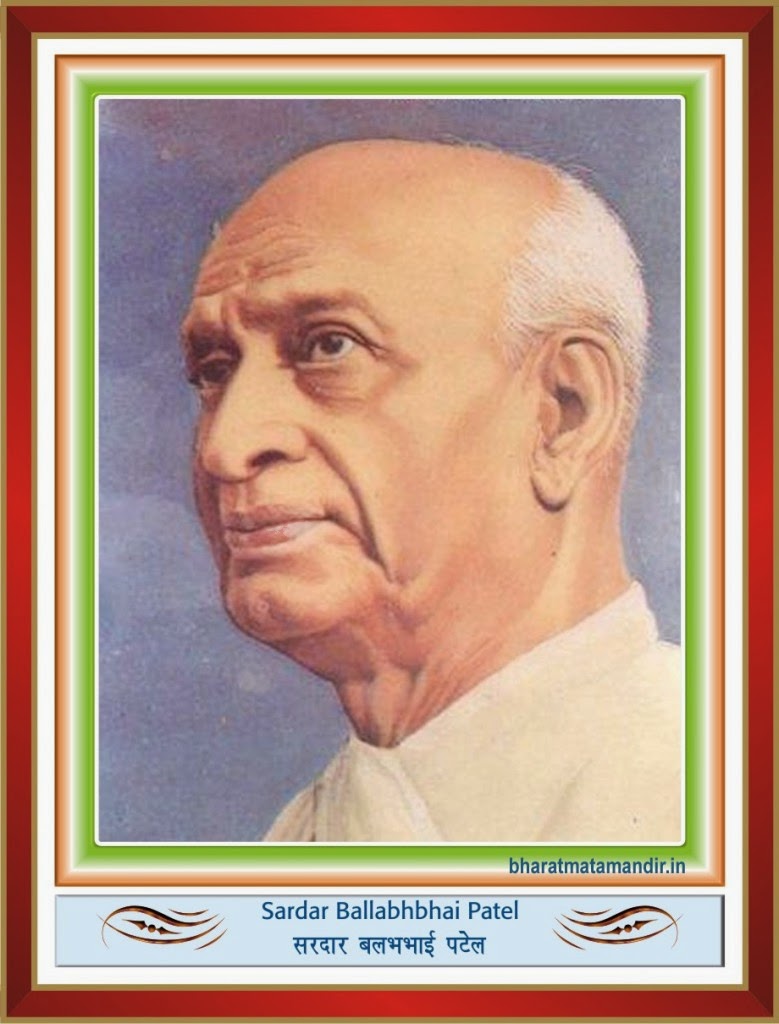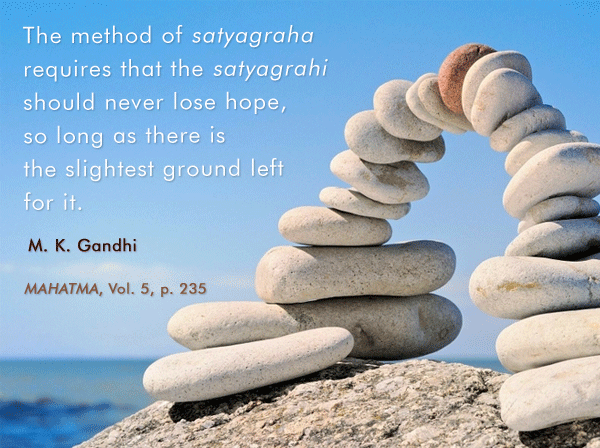25. IN INDIA
AN AUTOBIOGRAPHY:
THE STORY OF MY EXPERIMENTS WITH TRUTH
by Mohandas K. Gandhi
Part-2.
On my way to Bombay the train stopped at Allahabad for forty-five minutes. I decided to utilize the interval for a drive through the town. I also had to purchase some medicine at a chemist's shop. The chemist was half asleep, and took an unconscionable time in dispensing the medicine, with the result that when I reached the station, the train had just started. The Station Master had kindly detained the train one minute for my sake, but not seeing me coming, had carefully ordered my luggage to be taken out of the train.
I took a room at Kellner's, and decided to start work there and then. I had heard a good deal about The Pioneer published from Allahabad, and I had understood it to be an opponent of Indian aspirations. I have an impression that Mr. Chesney Jr. was the editor at that time. I wanted to secure the help of every party, so I wrote a note to Mr. Chesney, telling him how I had missed the train, and asking for an appointment so as to enable me to leave the next day. He immediately gave me one, at which I was very happy especially when I found that he gave me a patient hearing. He promised to notice in his paper anything that I might write, but added that he could not promise to endorse all the Indian demands, inasmuch as he was bound to understand and give due weight to the viewpoint of the Colonials as well.
'It is enough,' I said, 'that you should study the question and discuss it in your paper. I ask and desire nothing but the barest justice that is due to us.'
The rest of the day was spent in having a look round admiring the magnificent confluence of the three rivers, the Triveni, and planning the work before me.
This unexpected interview with the editor of The Pioneer laid the foundation of the series of incidents which ultimately led to my being lynched in Natal.
I went straight to Rajkot without halting at Bombay and began to make preparations for writing a pamphlet on the situation in South Africa. The writing and publication of the pamphlet took about a month. It had a green cover and came to be known afterwards as the Green Pamphlet. In it I drew a purposely subdued picture of the condition of Indians in South Africa. The language I used was more moderate than that of the two pamphlets which I have referred to before, as I knew that things heard of from a distance appear bigger than they are.
Ten thousand copies were printed and sent to all the papers and leaders of every party in India. The Pioneer was the first to notice it editorially. A summary of the article was cabled by Reuter to England, and a summary of that summary was cabled to Natal by Reuter's London office. This cable was not longer than three lines in print. It was a miniature, but exaggerated, edition of the picture I had drawn of the treatment accorded to the Indians in Natal, and it was not in my words. We shall see later on the effect this had in Natal. In the meanwhile every paper of note commented at length on the question.
To get these pamphlets ready for posting was no small matter. It would have been expensive too, if I had employed paid help for preparing wrappers etc. But I hit upon a much simpler plan. I gathered together all the children in my locality and asked them to volunteer two or three hours' labour of a morning, when they had no school. This they willingly agreed to do. I promised to bless them and give them, as a reward, used postage stamps which I had collected. They got through the work in no time. That was my first experiment of having little children as volunteers. Two of those little friends are my co-workers today.
Plague broke out in Bombay about this time, and there was panic all around. There was fear of an outbreak in Rajkot. As I felt that I could be of some help in the sanitation department, I offered my services to the State. They were accepted, and I was put on the committee which was appointed to look into the question. I laid especial emphasis on the cleanliness of latrines, and the committee decided to inspect these in every street. The poor people had no objection to their latrines being inspected, and what is more, they carried out the improvements suggested to them. But when we went to inspect the houses of the upper ten, some of them even refused us admission, not to talk of listening to our suggestions. It was our common experience that the latrines of the rich were more unclean. They were dark and stinking and reeking with filth and worms. The improvements we suggested were quite simple, e.g., to have buckets for excrement instead of allowing it to drop on the ground; to see that urine also was collected in buckets, instead of allowing it to soak into the ground, and to demolish the partitions between the outer walls and the enable the scavenger to clean them properly. The upper classes raised numerous objections to this last improvement, and in most cases it was not carried out.
The committee had to inspect untouchables' quarters also. Only one member of the committee was ready to accompany me there. To the rest it was something preposterous to visit those quarters, still more so to inspect their latrines. But for me those quarters were an agreeable surprise. That was the first visit in my life to such a locality. The men and women there were surprised to see us. I asked them to let us inspect their latrines.
'Latrines for us!' they exclaimed in astonishment. 'We go and perform our functions out in the open. Latrines are for you big people.'
'Well, then, you won't mind if we inspect your houses?' I asked.
'You are perfectly welcome, sir. You may see every nook and corner of our houses. Ours are no houses, they are holes.'
I went in and was delighted to see that the insides were as clean as the outsides. The entrances were well swept, the floors were beautifully smeared with cow-dung, and the few pots and pans were clean and shining. There was no fear of an outbreak in those quarters.
In the upper class quarters we came across a latrine which I cannot help describing in some detail. Every room had its gutter, which was used both for water and urine, which meant that the whole house would stink. But one of the houses had a storeyed bedroom with a gutter which was being used both as a urinal and a latrine. The gutter had a pipe discending to the ground floor. It was not possible to stand the foul smell in this room. How the occupants could sleep there I leave the readers to imagine.
The committee also visited the Vaishnava Haveli. The priest in charge of the Haveli was very friendly with my family. So he agreed to let us inspect everything and suggest whatever improvements we liked. There was a part of the Haveli premises that he himself had never seen. It was the place where refuse and leaves used as dinner- plates used to be thrown over the wall. It was the haunt of crows and kites. The latrines were of course dirty. I was not long enough in Rajkot to see how many of our suggestions the priest carried out.
It pained me to see so much uncleanliness about a place of worship. One would expect a careful observance of the rules of sanitation and hygiene in a place which is regarded as holy. The authors of the Smritis, as I knew even then, have laid the greatest emphasis on cleanliness both inward and outward.
Next : (51) 26.TWO PASSIONS
Continues...




Comments